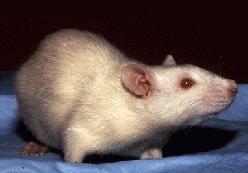Related Research Articles

Psychosis is an abnormal condition of the mind that results in difficulties determining what is real and what is not real. Symptoms may include delusions and hallucinations, among other features. Additional symptoms are incoherent speech and behavior that is inappropriate for a given situation. There may also be sleep problems, social withdrawal, lack of motivation, and difficulties carrying out daily activities. Psychosis can have serious adverse outcomes.

A hallucination is a perception in the absence of an external stimulus that has the qualities of a real perception. Hallucinations are vivid, substantial, and are perceived to be located in external objective space. They are distinguishable from several related phenomena, such as dreaming, which does not involve wakefulness; pseudohallucination, which does not mimic real perception, and is accurately perceived as unreal; illusion, which involves distorted or misinterpreted real perception; and imagery (imagination), which does not mimic real perception, and is under voluntary control. Hallucinations also differ from "delusional perceptions", in which a correctly sensed and interpreted stimulus is given some additional significance. Many hallucinations happen also during sleep paralyses.
An evoked potential or evoked response is an electrical potential in a specific pattern recorded from a specific part of the nervous system, especially the brain, of a human or other animals following presentation of a stimulus such as a light flash or a pure tone. Different types of potentials result from stimuli of different modalities and types. EP is distinct from spontaneous potentials as detected by electroencephalography (EEG), electromyography (EMG), or other electrophysiologic recording method. Such potentials are useful for electrodiagnosis and monitoring that include detections of disease and drug-related sensory dysfunction and intraoperative monitoring of sensory pathway integrity.
Anhedonia is a diverse array of deficits in hedonic function, including reduced motivation or ability to experience pleasure. While earlier definitions emphasized the inability to experience pleasure, anhedonia is currently used by researchers to refer to reduced motivation, reduced anticipatory pleasure (wanting), reduced consummatory pleasure (liking), and deficits in reinforcement learning. In the DSM-5, anhedonia is a component of depressive disorders, substance-related disorders, psychotic disorders, and personality disorders, where it is defined by either a reduced ability to experience pleasure, or a diminished interest in engaging in pleasurable activities. While the ICD-10 does not explicitly mention anhedonia, the depressive symptom analogous to anhedonia as described in the DSM-5 is a loss of interest or pleasure.
The Fregoli delusion is a rare disorder in which a person holds a delusional belief that different people are in fact a single person who changes appearance or is in disguise. The syndrome may be related to a brain lesion and is often of a paranoid nature, with the delusional person believing themselves persecuted by the person they believe is in disguise.

An event-related potential (ERP) is the measured brain response that is the direct result of a specific sensory, cognitive, or motor event. More formally, it is any stereotyped electrophysiological response to a stimulus. The study of the brain in this way provides a noninvasive means of evaluating brain functioning.
A gamma wave or gamma Rhythm is a pattern of neural oscillation in humans with a frequency between 25 and 140 Hz, the 40-Hz point being of particular interest. Gamma rhythms are correlated with large scale brain network activity and cognitive phenomena such as working memory, attention, and perceptual grouping, and can be increased in amplitude via meditation or neurostimulation. Altered gamma activity has been observed in many mood and cognitive disorders such as Alzheimer's disease, epilepsy, and schizophrenia.

Sensory overload occurs when one or more of the body's senses experiences over-stimulation from the environment. There are many environmental elements that affect an individual. Examples of these elements are urbanization, crowding, noise, mass media, technology, and the explosive growth of information.
Sensory gating describes neural processes of filtering out redundant or irrelevant stimuli from all possible environmental stimuli reaching the brain. Also referred to as gating or filtering, sensory gating prevents an overload of information in the higher cortical centers of the brain. Sensory gating can also occur in different forms through changes in both perception and sensation, affected by various factors such as "arousal, recent stimulus exposure, and selective attention.
The mismatch negativity (MMN) or mismatch field (MMF) is a component of the event-related potential (ERP) to an odd stimulus in a sequence of stimuli. It arises from electrical activity in the brain and is studied within the field of cognitive neuroscience and psychology. It can occur in any sensory system, but has most frequently been studied for hearing and for vision, in which case it is abbreviated to vMMN. The (v)MMN occurs after an infrequent change in a repetitive sequence of stimuli For example, a rare deviant (d) stimulus can be interspersed among a series of frequent standard (s) stimuli. In hearing, a deviant sound can differ from the standards in one or more perceptual features such as pitch, duration, loudness, or location. The MMN can be elicited regardless of whether someone is paying attention to the sequence. During auditory sequences, a person can be reading or watching a silent subtitled movie, yet still show a clear MMN. In the case of visual stimuli, the MMN occurs after an infrequent change in a repetitive sequence of images.
An auditory hallucination, or paracusia, is a form of hallucination that involves perceiving sounds without auditory stimulus.
The contingent negative variation (CNV) is the reaction time between a warning and a go signal as measured by electroencephalography (EEG). The CNV was one of the first event-related potential (ERP) components to be described. The CNV component was first described by W. Grey Walter and colleagues in an article published in Nature in 1964. The importance of this finding was that it was one of the first studies which showed that consistent patterns of the amplitude of electric responses could be obtained from the large background noise which occurs in EEG recordings and that this activity could be related to a cognitive process such as expectancy.
Pierre Flor-Henry is a Canadian psychiatrist, researcher, lecturer, and professor. His most important initial contribution was the demonstration in the study of epileptic psychosis, that schizophrenia relates to left and manic-depressive states relate to right hemisphere epilepsies.
In genetic epidemiology, endophenotype is a term used to separate behavioral symptoms into more stable phenotypes with a clear genetic connection. The concept was coined by Bernard John and Kenneth R. Lewis in a 1966 paper attempting to explain the geographic distribution of grasshoppers. They claimed that the particular geographic distribution could not be explained by the obvious and external "exophenotype" of the grasshoppers, but instead must be explained by their microscopic and internal "endophenotype".
In neuroscience, the N100 or N1 is a large, negative-going evoked potential measured by electroencephalography ; it peaks in adults between 80 and 120 milliseconds after the onset of a stimulus, and is distributed mostly over the fronto-central region of the scalp. It is elicited by any unpredictable stimulus in the absence of task demands. It is often referred to with the following P200 evoked potential as the "N100-P200" or "N1-P2" complex. While most research focuses on auditory stimuli, the N100 also occurs for visual, olfactory, heat, pain, balance, respiration blocking, and somatosensory stimuli.

The P3b is a subcomponent of the P300, an event-related potential (ERP) component that can be observed in human scalp recordings of brain electrical activity. The P3b is a positive-going amplitude peaking at around 300 ms, though the peak will vary in latency from 250 to 500 ms or later depending upon the task and on the individual subject response. Amplitudes are typically highest on the scalp over parietal brain areas.
The oddball paradigm is an experimental design used within psychology research. Presentations of sequences of repetitive stimuli are infrequently interrupted by a deviant stimulus. The reaction of the participant to this "oddball" stimulus is recorded.
The mechanisms of schizophrenia that underlie the development of schizophrenia, a psychiatric disorder, are complex and not clearly understood. A number of hypotheses including the dopamine hypothesis, and the glutamate hypothesis have been put forward in an attempt to explain the link between altered brain function and the symptoms and development of schizophrenia. Proposed models are separate from the proposed causes, which deal with the risk factors that may lead to schizophrenia.

Visual processing abnormalities in schizophrenia are commonly found, and contribute to poor social function.

Research into the mental disorder of schizophrenia, involves multiple animal models as a tool, including in the preclinical stage of drug development.
References
- 1 2 Nathan Zasler; Douglas Katz, MD; Ross D. Zafonte (2007). Brain Injury Medicine: Principles and Practice. Demos Medical Publishing. pp. 160–161. ISBN 978-1-888799-93-4.
- ↑ Michael S. Ritsner (21 April 2009). The Handbook of Neuropsychiatric Biomarkers, Endophenotypes and Genes: Volume I: Neuropsychological Endophenotypes and Biomarkers. Springer. p. 120. ISBN 978-1-4020-9464-4.
- ↑ Christoph Mulert; Louis Lemieux (29 October 2009). EEG - fMRI: Physiological Basis, Technique, and Applications. Springer. p. 84. ISBN 978-3-540-87919-0.
- 1 2 3 Michelle de Haan (15 April 2013). Infant EEG and Event-Related Potentials. Psychology Press. p. 240. ISBN 978-1-134-95522-0.
- 1 2 Kenneth L. Davis; American College of Neuropsychopharmacology (2002). Neuropsychopharmacology: The Fifth Generation of Progress : an Official Publication of the American College of Neuropsychopharmacology. Lippincott Williams & Wilkins. p. 706. ISBN 978-0-7817-2837-9.
- ↑ Roland A. Carlstedt PhD (14 December 2009). Handbook of Integrative Clinical Psychology, Psychiatry, and Behavioral Medicine: Perspectives, Practices, and Research. Springer Publishing Company. p. 595. ISBN 978-0-8261-1095-4.
- 1 2 E. Roy Skinner (2002). Brain Lipids and Disorders in Biological Psychiatry. Elsevier. pp. 46–47. ISBN 978-0-444-50922-2.